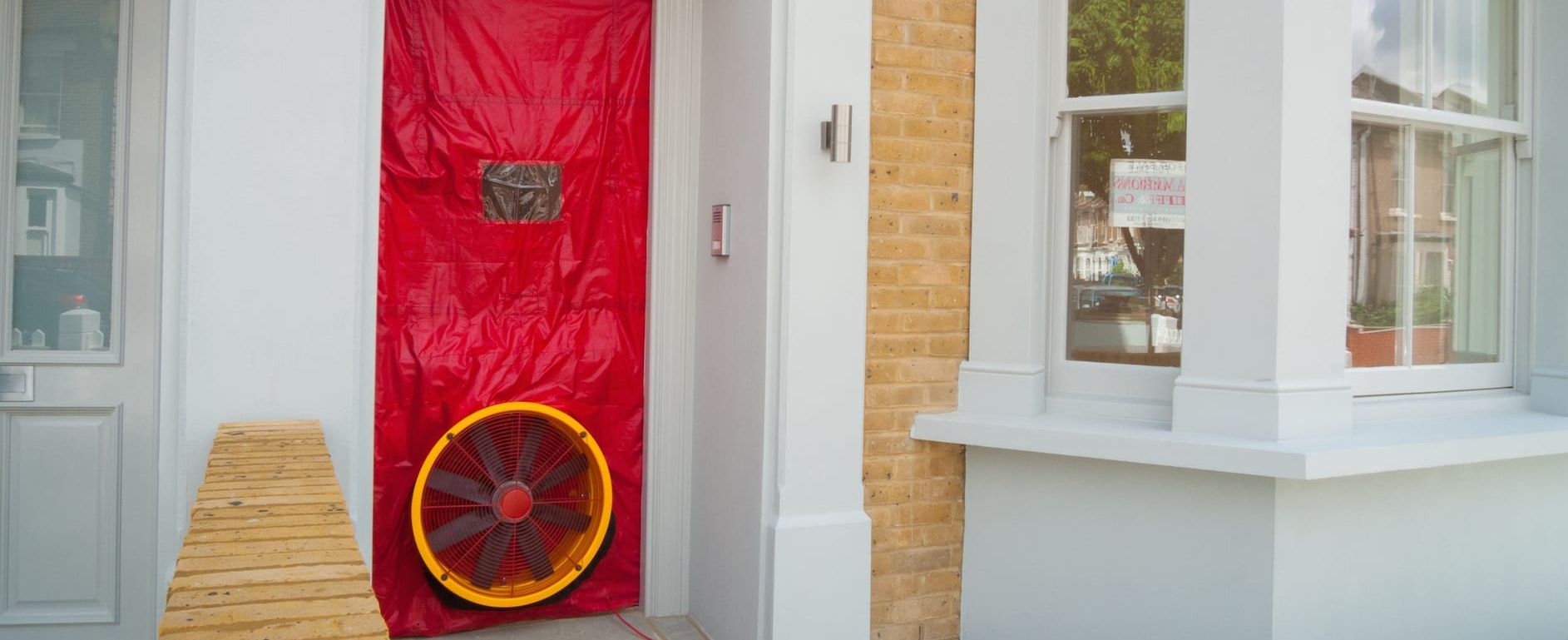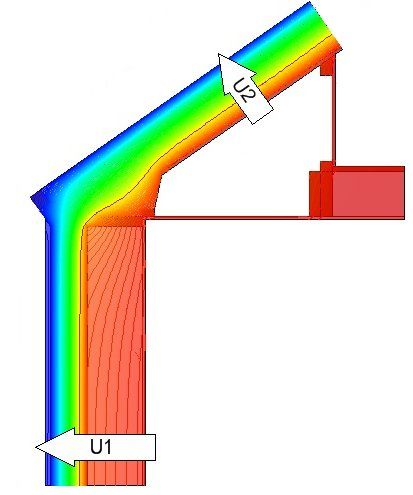The Importance of Air Tightness Testing in Dwellings
Air tightness testing plays a crucial role in ensuring energy efficiency, maintaining indoor air quality, and improving the overall occupant comfort in homes. In this blog, we will explore the importance of air-tightness testing and its implications.
The Methods of Air Tightness Testing
Air tightness testing can be performed through two methods: the blower door method and pulse testing. Commonly, the test is performed via the blower door method. This involves either depressurising or pressurising the dwelling at various pressure points to determine the air permeability of the dwelling via a specialised, calibrated fan mounted to an external door on a frame. This test is conducted after the dwelling is built and is crucial in determining the build quality, allowing for remedial work to improve the air tightness of the dwelling before occupants move in. The second and newly introduced method is pulse testing, which is a non-intrusive testing method involving short periodic blasts of air which can test small, relatively air-tight dwellings at a low pressure.
During the blower door method, air leakage areas can be identified as air is forced through penetrations in the building fabric. The leakage areas can also be visually identified through smoke testing, whereby smoke can be seen being forced through the areas under pressure. Within dwellings, these air leakage areas are typically around the penetrations for plumbing, spotlights and through poorly installed openings.
The Benefits of Air Tightness Testing
The higher the air permeability of the building, the greater the potential for loss of heat through the building fabric, leading to higher heating demand and therefore increasing the running costs and carbon emissions for the dwelling. Air leakage can also result in uneven temperature distribution, drafts and cold spots therefore compromising occupant comfort. By sealing these leaks, the building envelope becomes more thermally efficient, creating a more consistent and comfortable indoor environment regardless of external conditions.
Beyond energy efficiency and comfort, air tightness testing also helps prevent moisture intrusion and mould growth. Air leakage allows moisture to enter the building, leading to mould growth and compromising indoor air quality. Moisture-related issues can affect the lifespan of the dwelling and the effectiveness of insulation. By identifying and sealing air leaks, air tightness testing helps mitigate these risks, safeguarding the structural integrity of the building and the health of its occupants, which is particularly crucial for individuals with respiratory conditions or allergies. In order to reduce the risk of mould growth and to maintain good indoor air quality, it is crucial that a suitable and functioning ventilation system is installed. Building an air-tight dwelling also allows for better control of overall ventilation.
The History and Future of Air Tightness Testing
The current air tightness test requirements for dwellings are detailed within Approved Document Part L, Conservation of fuel and power, Volume 1: Dwellings, 2021 edition. Approved Document Part L was first introduced in 1995, and air tightness testing for new builds was first introduced in the UK in 2002 within Approved Document Part L1, Conservation of fuel and power in dwellings, 2002 edition.
While there have been multiple revisions to Building Regulations Part L, focusing on reducing carbon emissions through more efficient heating systems and increased insulation levels, air tightness testing requirements have remained relatively unchanged over the 20 years since it was introduced. However, the transition from Approved Document Part L 2016 to 2021 saw a reduction in the maximum allowed air tightness test score from 10 @ 50Pa to 8 @ 50Pa, and introduced the requirement to air test all newly built dwellings. In practice, achieving an air tightness test score of 8 @ 50 Pa necessitates building to a high specification. Most dwellings struggle to achieve compliance with an air tightness test score above 6.5 @ 50 Pa. Under the previous Building Regulations, it was possible to perform sample testing on dwellings of the same construction and layout, ignoring those dwellings that were not tested but claiming the air tightness test result achieved for these dwellings was the average air tightness score of those tested plus 2 @ 50 Pa. The requirement to test all dwellings ensures that all dwellings will achieve the air permeability requirements individually and that the carbon emissions and primary energy consumption within SAP is more accurate.
Looking ahead, the future of air tightness testing in the UK appears promising, driven by a growing emphasis on sustainability, energy efficiency and energy demand. As building regulations continue to evolve and tighten, the demand for lower air-tightness test scores is expected to increase. All new dwellings should aim to achieve an air tightness test score of 3 @ 50 Pa or below and install a continuously running ventilation system for the best performance.
Furthermore, the UK's commitment to achieving net-zero carbon emissions by 2050 will further elevate the importance of air tightness testing in the built environment. Buildings play a significant role in energy consumption and greenhouse gas emissions, making optimising their performance through air tightness testing essential for meeting ambitious climate targets.
Ashby Energy Assessors Blog and News

Contact Us
We will get back to you as soon as possible
Please try again later
Directory
Contact Information
01476 870504
info@ashbyenergy.co.uk
Ashby Energy Assessors Ltd
Head Office
Landrace Lodge
Friars Well Estate
Wartnaby
Melton Mowbray
Leicestershire
LE14 3HQ
All Rights Reserved | Ashby Energy Assessors | Design & Build By Kangaroo UK




